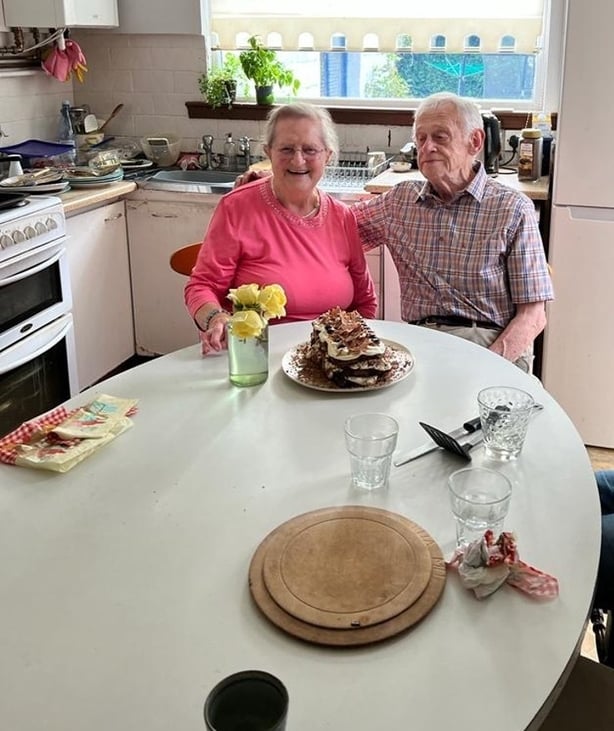Analysis: Richard's transformation from a sedentary lifestyle to a world champion is a powerful reminder that it's never too late to start exercising
This article is now available above as a Brainstorm podcast. You can subscribe to the Brainstorm podcast through Apple Podcasts, Sti tcher, Spotify or wherever you get your podcasts.
By Lorcan Daly, TUS
Both as a sports scientist and as his grandson, I have been deeply inspired by my late grandfather, Richard Morgan. At 92 years of age, Richard was a four-time world champion in indoor rowing, achieving remarkable feats of physical performance.
What makes his story extraordinary is not just his achievements, but the fact that he was largely sedentary for most of his life. Until he 'rediscovered' sport at the age of 73, his physical activity was limited to some hurling during secondary school. Remarkably, he stayed largely inactive from school until after his retirement, and was even a smoker for much of his adult life
His transformation from a sedentary lifestyle to a world champion serves as a powerful reminder that it is never too late to start exercising. The human body is capable of extraordinary adaptation when subjected to the right exercise stimulus.
From a late start to four-time world champion
Richard’s journey began when he was collecting his grandson (my cousin Breffney) from rowing training. To pass the time, he hopped on a rowing ergometer, and a coach passing by remarked on his natural technique. What started as casual exercise fast evolved into a structured routine and, within a few years, he was traveling to Boston and competing at world championships each year.
From The Irish Examiner, 2014 interview with Richard Morgan
In addition to all of the psychological and physical benefits associated with exercise (exhibited by his great mood and energy), the training and competition gave him a great sense of purpose in his retirement and tapped into his competitive nature. Several family members, myself included, travelled to America with him for these annual championships. He trained year-round for these competitions, often resuming his regime just days after returning home as he truly loved the entire process.
As a sport scientist, I found this fascinating. I recalled seeing a study published by a colleague, Dr. Bas Van Hooren, on a 70-year-old marathon world champion. It struck me: why not recruit my grandfather for something similar? With that, Dr. Bas Van Hooren, Prof Phil Jakeman and myself prepared this project.
What the study found
At the University of Limerick, Prof. Jakeman and I conducted a comprehensive assessment of Richard's physical and physiological capacities. The results were remarkable:
A muscular and lean body Composition. Despite his age, Richard demonstrated 47 kilograms of muscle (80% of his body weight) and just 14% body fat.
High Peak Power. At 225 watts, Richard demonstrated a remarkable peak power on the ergometer. With ageing, power is fast to deteriorate and requires specific strength training to avoid functional losses
Outstanding cardiovascular attributes. During a 2000m time trial, Richard's heart rate peaked at 151 beats per minute—possibly one of the highest recorded in an individual over 85. Most notably, his time to achieve steady state (an indicator of aerobic fitness) was 25 seconds, a value identical to normative values for a healthy 25-year-old.

Training, nutrition and achievements
Richard’s success stemmed from his disciplined training program. He followed a structured program combining rowing and resistance exercises to maintain both cardiovascular fitness and muscle mass. This dual approach of strengthening and aerobic-based exercise aligns with the best evidence for mitigating age-related declines in muscle function and aerobic capacity. Importantly, he remained injury free for the duration of his entire rowing career.
Regarding nutrition, Richard understood its key role in supporting his training. He followed consistent, balanced diet rich in protein and carbohydrates to fuel his workouts and promote adaptation. This approach likely helped maintain his highly developed muscle mass, power/strength and aerobic fitness. Much of this was thanks to his wife, Rita, who tirelessly cooked meals and baked fresh wholemeal scones every day to keep him fuelled for his demanding routine.
This case study adds to a growing body of research into the physiology of master athletes, although data in advanced ages (over 85 years) and/or female masters remains limited in this emerging field.
Richard's journey
For Richard, rowing was less about medals and more about the satisfaction of improving his performance, strong sense of purpose and the camaraderie within the master rowing community (although he certainly enjoyed the winning element). He often joked about checking competition entry lists to see if his rivals were 'still living,’

Richard’s unique journey challenges the conventional view of aging and human performance, offering a powerful message for individuals of any age: it’s never too late to take control of your health. The study exemplifies the premise that both strengthening and aerobic endurance exercise are essential.
It was a great honour for Richard and our family to see the global interest his story generated. Building on this, I have extended research to include three other master world champion rowers, all of whom were close friends of Richard. The findings from this work will be shared in the coming weeks.
Sadly, Richard passed away last year. His was a fantastic father, husband, grandfather and friend and we all have such fond memories with him. While his loss is deeply felt, his legacy endures, and what a privilege it is to look back on a life so well spent.
Follow RTÉ Brainstorm on WhatsApp and Instagram for more stories and updates
Dr Lorcan Daly is an Assistant Lecturer in Sport Science at the Department of Sport and Health Sciences at Technological University of the Shannon (TUS).
The views expressed here are those of the author and do not represent or reflect the views of RTÉ
